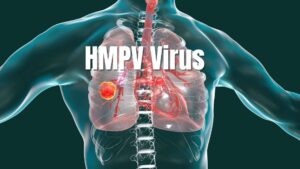
The outbreak in China is being closely monitored by various countries. The National Centre for Disease Control (NCDC), under the Union Health Ministry, is actively tracking respiratory and seasonal influenza cases in India, staying in contact with international agencies, according to sources reported by ANI. HMPV has become one of the most prevalent viral infections among hospital visitors in China, with an increasing positivity rate, particularly among children aged 14 and under, according to China Daily.
HMPV Affects Both Children and Older Adults
HMPV, a virus belonging to the Pneumoviridae family and Metapneumovirus genus, is an enveloped, single-stranded negative-sense RNA virus. It primarily causes upper respiratory tract infections, such as the common cold.
Common Symptoms of HMPV
The symptoms of HMPV include cough, fever, nasal congestion, shortness of breath, and wheezing. These symptoms are similar to those caused by other respiratory viruses. In more severe cases, HMPV can lead to bronchitis or pneumonia.
According to a report from the Chinese Center for Disease Control and Prevention, data from 2009 to 2019 shows that HMPV ranked eighth among viruses causing acute respiratory infections, with a positivity rate of 4.1%. This is much lower than the 28.5% positivity rate for the influenza virus.
How HMPV Spreads
HMPV spreads through respiratory droplets from an infected person when they cough, sneeze, or talk. Exposure to virus-contaminated environments can also lead to transmission. The immunity gained from an HMPV infection is weak, which allows for the possibility of repeated infections. HMPV is detectable year-round, though it is most prevalent in the winter and spring months.
How to Protect Yourself from HMPV
To protect yourself from HMPV, practice good hygiene and preventive measures. Since HMPV spreads via respiratory droplets, wash your hands regularly with soap and water for at least 20 seconds. Avoid touching your face, especially your eyes, nose, and mouth. If you’re feeling unwell with symptoms like a cough, sore throat, or fever, stay home to prevent spreading the virus to others. Wearing a mask in crowded places and disinfecting frequently touched surfaces like doorknobs, light switches, and smartphones can help reduce the risk of transmission.
It’s important to monitor symptoms and seek medical attention if they worsen, particularly for vulnerable groups such as young children, older adults, and individuals with weakened immune systems. By following these precautions, you can reduce the likelihood of contracting or spreading HMPV.
Key Facts About HMPV
•HMPV is responsible for around 20,000 hospitalizations of children under 5 in the U.S. each year.
•It has been a known respiratory pathogen for at least 60 years and is widespread globally.
•HMPV infection can be fatal for individuals with underlying health conditions.
•There is currently no vaccine available for HMPV.
